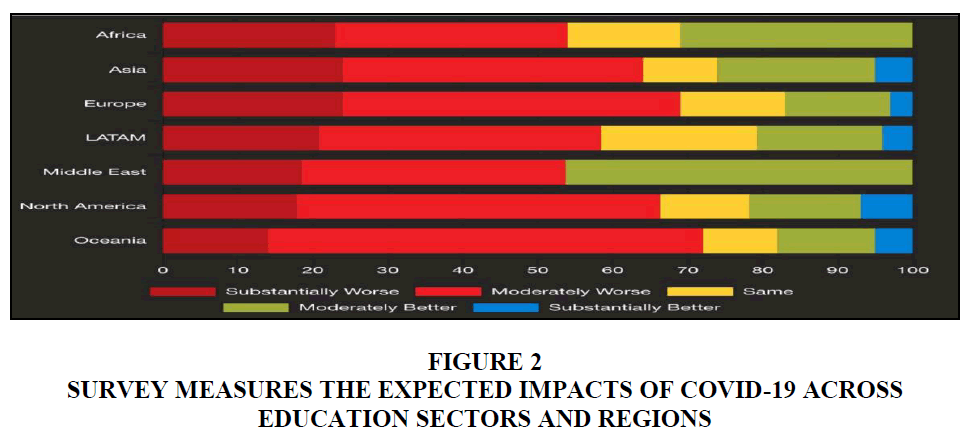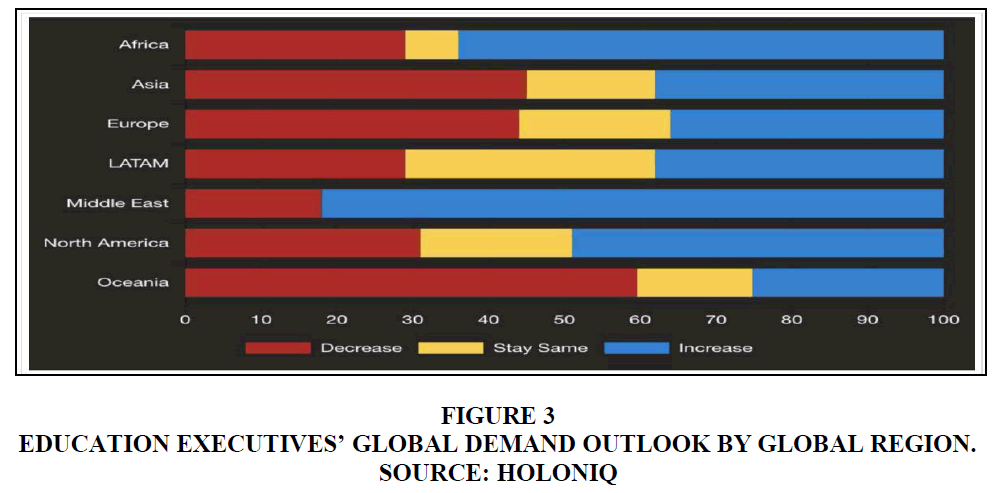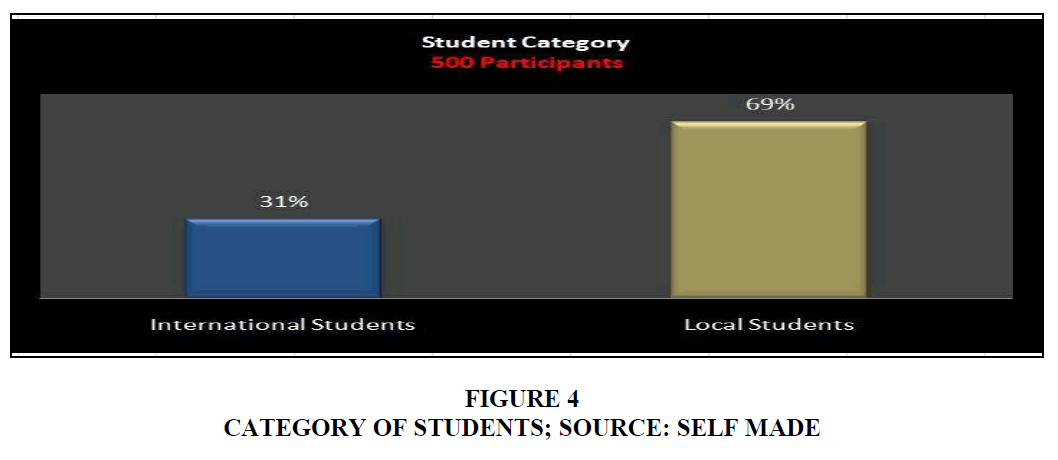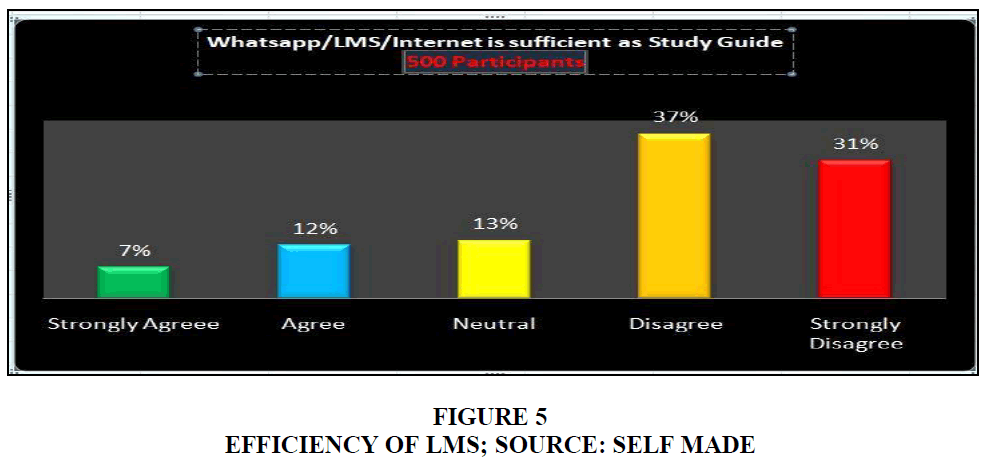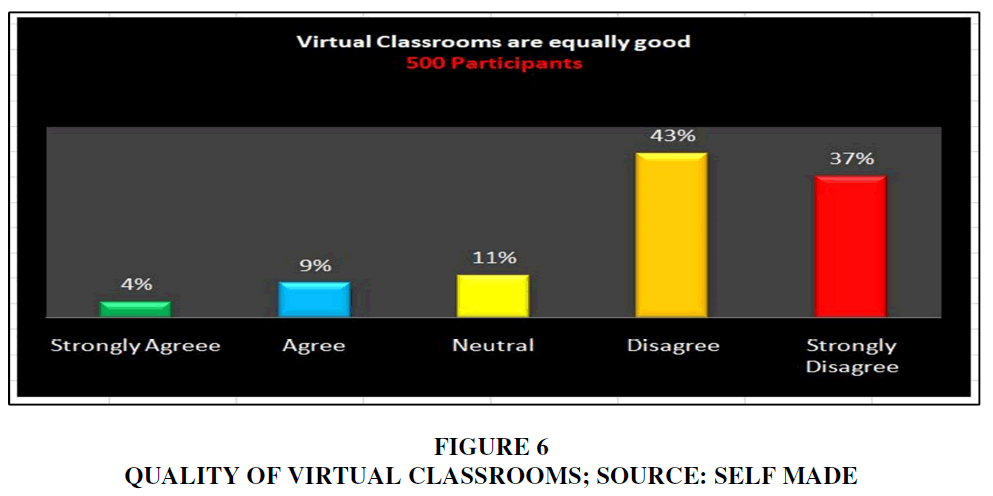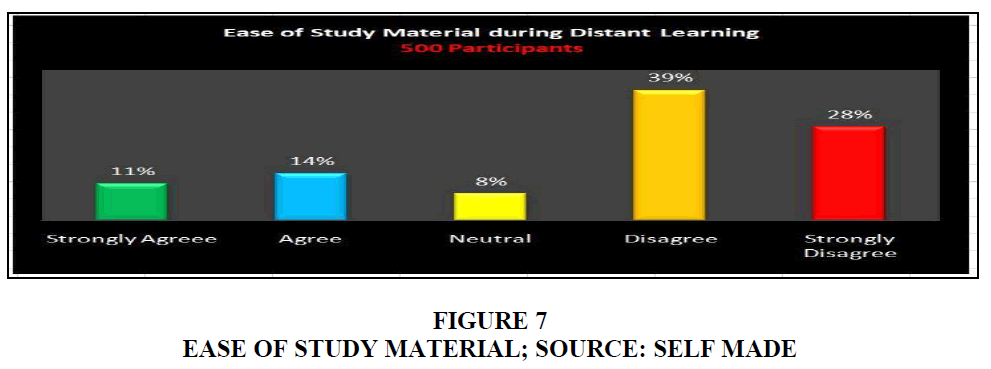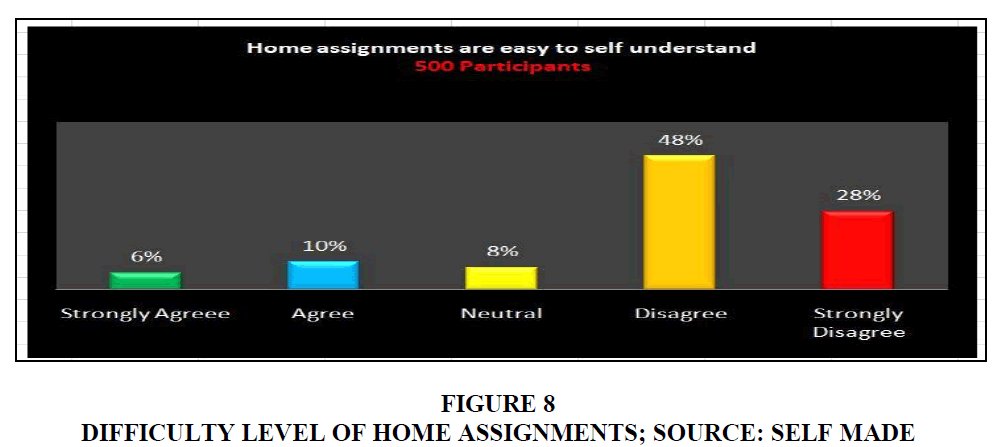Research Article: 2020 Vol: 23 Issue: 3
Covid-19 Pandemic, Outbreak Educational Sector and Students Online Learning in Saudi Arabia
Muhammad Tanveer, Lincoln University College, Malaysia
Amiya Bhaumik, Lincoln University College, Malaysia
Shafiqul Hassan, Prince Sultan University, Riyadh, Saudi Arabia
Ikram Ul Haq, King Saud bin Abdul-Aziz University for Health Sciences, Riyadh, Saudi Arabia
Citation Information: Tanveer, M., Bhaumik, A., Hassan, S., & Ul Haq, I. (2020). Covid-19 pandemic, outbreak educational sector and students online learning in Saudi Arabia. Journal of Entrepreneurship Education, 23(3).
Abstract
Measures to restrict the dissemination of the COVID-19 virus amongst the older and younger communities in many nations have led to the widespread closing of hospitals, schools, colleges and other educational establishments. According to the Saudi Ministry of Education, health authorities have been recommending "preventive and precautionary" steps to ensure full protection for students and staff. The ministry asked for the approval of virtual schools so that the learners will not mentally fall behind. The outbreak took a lot of hurdles like poverty, unemployment, social pressure and Education deficiencies.
After the announcement of University closures, Saudi Arabia is one of the nation where students are worried and going through a phase of learning, where they have no tutor, a lot of course work and only themselves to help them study. No team work, juts digital libraries are making it even worse. Many learning management systems are introducing, but none of them can come even closer to the impact and quality physical classrooms can provide. As graduate students, all students and professors are situated inside the liminal room of just being. This ensures they will contribute to both their students' and their own scholarly duties at the duration of the COVID-19 pandemic and campus suspensions. They've seen learning consortia and coalitions taking shape over the last few weeks, with numerous actors-including states, retailers, educational experts, infrastructure companies, and mobile network operators-working forward to leverage new channels as a potential response to the problem.
Keywords
COVID-19, Pandemic, School and Universities Education, Pandemic, Saudi Arabia.
Introduction
Modern corona virus story starts in 1965, after Tyrrell & Bynoe (1966) realized that only a virus called B814 can travel around. This one was observed in cultures of biological epithelial tracheal part of the body acquired with an older teenager with just a cold or flu throughout the respiratory system (Tyrrell & Bynoe, 1966). Its existence of such an immune reaction is seen with quarantining that medium dosed orally in healthy subjects from all these cultures; infections became induced in a large percentage among participants, although at this stage Tyrrell & Bynoe (1966) have been unable to establish the organism in cultured cells. Round the similar period, Hamre & Procknow (1966) became able to produce a virus using tests conducted among medical graduates containing chest infections with peculiar compounds in the plasma environment (Hamre & Procknow, 1966). Either B814 and Hamre's disease, that they called 229E, appeared air-sensitive and therefore also obviously needed an infected layer incorporating lipids, but even these 2 viruses have not been associated to just about any identified myxo-or para or myxo viruses. Whilst operating in Robert Chanock's facility at the National Institutes of Health, McIntosh et al. (1967) confirmed restoration from the clinical respiratory tract of many types of mist-sensitive organisms, adopting a procedure identical to that of Tyrrell & Bynoe (1966). Those viruses became labeled "OC" to reflect being raised in tissue populations (McIntosh et al., 1967).
Tyrrell & Bynoe (1966) conducted electron microscopy onto substances from organ samples tainted with B814 throughout the same time span, which identified samples that replicated chickens' contagious bronchitis virus. That particulates have been niche-sized (80–150 nm), , membrane-coated ,pleomorphic, as well as covered with league-shaped ground estimates generally spaced. The similar morphological characteristics were discovered in the 229E agent detected by Hamre & Procknow (1966) and also the previous McIntosh et al. (1967) OC viruses (Figure 1).
Although study was continuing to examine human corona viruses' virulence factors and microbiology, growing quantity and value of wildlife corona viruses were quickly increasing. Corona viruses have already been identified as causing diseases in many other species including mice, rabbits, birds, chickens, cows, pigs, rodents and cats. Research trials involved studies that based on breathing problems but have not been exclusive to this only. Ailments such as tonsillitis, hepatitis and meningitis in rats; pulmonary edema and sialoda-cryo-adenitis in mice; as well as bacterial peritonitis in cats were included in the report. Concerning fields of encephalitis generated by mice hepatitis virus and sepsis generated by invasive peritonitis virus in kitties, attention spiked especially. That epigenetic regulation of these disease states was complex and dynamic, demonstrating that perhaps the species on the whole is aware of a variety of pathways for the epidemic (Haring & Perlman, 2001).
Surfacing the Next Level of Severe Acute Respiratory Syndrome “SARS”-CORONA VIRUS
SARS contamination was recorded in 29 countries throughout North America, South America, Europe and Asia during the 2002–2003 epidemics. A total of 8098 infected individuals were reported, with 774 fatalities due to SARS (CDC, 2018). Whether the virus reached the human community is also unknown, and whether the Himalayan palm civets were the intended source for the virus. Pattern examination of the virus obtained from those in the Himalayan palm antelopes indicated how this virus produced a set of 29 nucleotides never seen in most individual isolates, namely several interested in the epidemic's spreading nationwide (Guan et al., 2003). This nucleotide sequence in animal pathogens retains the reliability of the 10th open reading frame (ORF); after a year in human pathogens the loss of this pattern resulted in 2 simultaneous ORFs. The SARS crisis brought again big inflow of capital and intervention to the field of corona viruses that contributed to enormous amount of virology and etiology of corona virus diseases currently identified by the increasing veterinary virology industry (Norrild, 1996).
Corona Virus Outbreak 2019 (COVID-19)
There are 5 new human corona viruses discovered since 2003. Calculating them, it shows that three of them are categorized in Group I viruses which strongly related to one another. Therefore, they are likely containing a certain viral organisms. To understand and resolve the matter, the three divisions of WHO (China country office, Western Pacific Regional Office, and headquarters) have really been putting efforts since 2 January 2020. The issue is seen as a public health emergency threat of international significance (PHEIC) by the WHO on 30 January (Coronavirus Disease (COVID-19) Outbreak, 2020).
Background of the Study
On 31 December 2019, an epidemic of uncertain origin identified in Wuhan, China had first been confirmed to China's WHO State Offices. WHO is functioning around the clock day and night to interpret evidence, give guidance, organize with collaborators, help organize economies, expand resources and handles teams of specialists. The epidemic was declared an international public health emergency on 30 January 2020 and thus affecting certainly every sector of human life particularly Education. As an answer to COVID-19, as integral step a lot of countries have also imposed immigration bans on the community (both internal and external) and having the objective and goal to avoiding the outbreak from expanding from one person to the other. National health specialists including state authorities are undertaking multiple steps, namely working from home, social distancing, quarantining in case of symptoms; improving health institutions to manage the infection; and request everyone to stay at home (Bedford et al., 2020).
Across several nations, measures to limit the dissemination of the COVID-19 virus between older and adolescent population have contributed to the extensive closing of universities, institutions, colleges and other educational establishments. Since around March 25, around one hundred and fifty countries had temporarily closed colleges and educational establishments involving better than 80% of the world's population of students.
Those subsequent diagrams illustrate these large regional experiences of the global epidemic's disruptions in the immediate and long term. The stat shows that Middle East countries are having 50% of the severity that might impact the whole economy (Figure 2).
Health officials have been urging "preventive and precautionary" measures to ensure full security for students and workers, according to the Saudi Ministry of Education. The ministry called for virtual schools to be allowed so that the learners would not intellectually fall behind. "The education minister has ordered the activation of virtual schools and remote education once the schools were closed to ensure that the learning phase proceeds in a secure and sensible manner," (Coronavirus Outbreak: Saudi Arabia Closes Schools and Universities, 2020) (Figure 3).
Health minister, Tawfiq Al-Rabiah has stated that no reports of corona virus have emerged from Saudi schools or educational institutions. Even after this statement, it cannot be stated that keeping learners away from the school will not have any adverse effect on the learning outcome.
Scope of Study
The study intends to highlight the impact of Virtual classes on learning outcome of students.
The post graduate students were contacted to know the efficiency of online education in the time of Corona Outbreak for Saudi Universities. The paper moves around the impact, Pros and cons and recommendations of online learning. Research is carried out by utilizing SWOT, Student survey questionnaires and telephonic interviews.
Study Objectives
The report will discuss the key issues that Saudi Arabia had to suffer due to this COVID-19 outbreak and will highlight;
• Effect of COVID-19 on Saudi Arabia Education Sector
• Impact of COVID-19 on Student Learning aspects
• Effectiveness of Internet/WhatsApp/LMS on Learning
Literature Review
While the corona virus quickly circulating in a lot of countries, many states had required decisive and drastic steps to avert an overflowing-blown contagion. Several reports have been released over the past two weeks, halting enrollment at colleges and universities. As of March 13, the OECD projected that more than 421 million children were impacted by funding cuts declared in 39 nations or enforced there (Huelsman, 2020). However, 22 other states declared limited "concentrated" quarantining (Tam, 2020). Globally, the sluggish rate of reform in learning institutions is appalling, despite thousands of years-old, seminar-based learning methods; structural prejudices rooted and outmoded classes. COVID-19 had, indeed, been just a vehicle for learning establishments all over the globe to look for groundbreaking approaches in a relatively brief timeframe (Linney, 2020). Many simplified ideas-but no less inventive-were introduced across the country. Traditional simultaneous interactive education resources (including reading materials through Google Classroom) have already been brought to one university with bidirectional face-to-face visual training to support avoid closures in classrooms.
After all, it is right to say that Class delays have a detrimental effect on academic performance for the pupils (Akther, 2020).
School education offers critical schooling and as school leave, the potential for growth and advancement for children and young adults are robbed. Those limitations for impoverished learners who continue to have less educational resources outside education are severe (UNESCO, 2020). As educational instates are closed, caregivers like parents, guardian and family members sometimes are requested to foster children's learning at parent's house and might even fail to execute the plan. That also especially applies to parents with reduced knowledge and tools. University dropout rates begin to rise due to all the problem of assuring that almost all learners return to school until closings terminate. This may be particularly valid for extended closures. Marginalized, at-risk, or abandoned children are more inclined to not leave school when closures are finished, and the impact may be a life-long limitation through missed chances (Baker, 2020; Kim, 2020). The future impacts of school closing and the reliance on distance learning are not discussed at this point in federal legislation (Furfaro et al., 2020).
Earlier this week, Saudi Arabia launched an online education program when it suspended universities around the Country over coronavirus issues, although students including academics ran into problems transitioning to a digital educational environment. Blackboard Learn, its name of the multinational interactive site, has already been leading on Saudi Twitter in past few days. Most university students often worried concerning certain area's weak connectivity, trouble log in to the network and taking courses, including lack of resources to access reports or perhaps even comprehend certain mentors (Obaid, 2020). This year's situation has already sparked the sense of irony of undergraduates as they swamped multiple social media platforms with memes, because many people on Twitter mentioned it. Researchers have recorded some awkward incidents that happened during lectures—with students going to sleep, loudly eating lunch, or debating with a peer when researchers failed to silence the headsets on their machines. Government Policy intends to facilitate improved schooling by remote learning approaches by starting a new commission to insure that virtual schools work under the commission's distance learning approaches (Draycott, 2020).
In coordination with different government departments, the welfare directorate and a range of educational offices and schools, the curriculum program involves events.
That Saudi Minister of Health also asserted that the Kingdom has also been clear from coronavirus (Fareed, 2020). An operational facility has been established at the Department of health to keep the virus at bay since the virus outbreak. Its core is adopting public health regulations in participation of appropriate authorities, when proposed by the Health organization.
No surprise that whatever the mitigation policies are adopted, the impact on education of youth cannot be mitigated and that too; adverse. The problem stays the same. Our education administrators are doing a double duty, working from home and checking the work and at the same time, imposing and monitoring students to be available for the virtual classes.
Same goes for learners. They are supposed to do the work of University and home both being independent and readily available all the time for any directive coming from the institute.
Methodology
The issue is getting severe with every Passing day. Everyone can recall the time when in December, 2019 and January, 2020 the human kind was introduced once again with Corona in China. Till it reached Saudi Arabia, It had already killed many in other countries and till Saudi Arabia could know the infection, many have been severely ailing with it.
To measure the objectives; the following methodology was used
• Quantitative Analysis
o Survey questionnaires
• Qualitative Analysis
o Predictive Study
o SWOT
Quantitative Analysis
Due to the lock down situations in the country, the surveys were distributed amongst the Post Grad. Students of International and National Universities of Saudi Arabia to know the following questions;
• The study material is easy to understand by Self Study.
• Internet/LMS/Whatsapp is sufficient as Study Guide.
• Virtual Classrooms are equally good as Physical Classrooms.
• The home assignments given during the Distant Learning are easy to understand.
Every question was classified in to the set of 4 sub questions. The analysis gave the overeall impression as “A big No” to virtual classroom.
Category of Students
The surveys were distributed via Google forms in the International & Local students of Post Graduate Students on Whatsapp and email addresses (Figure 4).
Out of 500 students, 345 were the students that belong to Saudi State and rests were from China, Pakistan & India that were studying in Saudi Universities. The International students (China, India and Pakistan) were flown to their countries as soon as this outbreak was confirmed and now taking virtual classes (Ziguras & Ly, 2020).
The Local students were from different Cities particularly Jeddah & Makah. Some students were hostilities and moved to their residences. The situation remains the same no matter if the students are from other countries, flown back to their native countries right after the outbreak, Or, the students that had to stay in hostels and could not fly back due to shutdown of airports after this, Or, the local students. All of them are attending the classes online and finding it difficult to resolve their study related matters due to less interaction and limited time.
Internet/Whatsapp/LMS is effective as Study Guide
Due to this Covid-19 lockdown Higher Education has closed all the Universities and Colleges in the state. The students are given IDs to sign into Virtual classrooms to attend 2 hours class thrice a week. Majority of the students responded that they are not comfortable with the amount of guidance they get virtually.
Further, Most of the times interruption in the Internet connection makes them inaccessible to class. Similarly, Whatsapp and Learning management systems cannot give the explanation to most of their answers.
The stats show the following responses (Figure 5):
68% of the total number is unhappy with the amount of help LMS and other internet tools can provide. Only 19% of them seem satisfied whereas 13% of them cannot possibly understand.
Virtual Classrooms are equally good as Physical Classrooms
As explained earlier, Internet most of the times doesn’t work. So students have to sign in to class when the class is over and they cannot get the answers live. Physical classrooms give the equal opportunity to all the students to resolve the queries whereas in virtual portals, the students cannot explain their questions and if they do; the answers are not clearly understood (Figure 6).
Study Material-Ease to Understand
The study material given during the quarantine time is sometimes from the courses that are not yet taught in the classes. Most of the student cannot understand most of the study material without any tutor or supervisor. So, the course material seems difficult to them.
The following stats represent the data (Figure 7):
Only 25% of the total participants say that they feel the assignments easy and can handle the work burden. 67% of the participants feel that the course material and work subjects are very difficult to do by themselves. They need external support.
Home Assignments–Difficulty Level
Time to time, the students are asked to do and submit the assignments. The questions most of the time are very tough and they can affect the grading of the course if not submitted as per the given criteria. They need assistance to understand the purpose and how the solution is given (Figure 8).
76% participants are feeling that the assignments are tough and cannot be done easily unless they are priory explained by the teachers.
Qualitative Analysis
It is planned that all educational establishments, including public and private colleges, professional and vocational training facilities will be suspended before further notice.
The participants were contacted over the telephone, emails and whatsapp to inquire about the issues they might face. Leaving the students aside, a recent survey tells that most of the teachers are having zero knowledge about setting up a virtual classroom and they are not aware of the troubleshooting options.
Predictions
There are few predictions that follow;
Layered learning can significantly improve: Very distributed education and learning activities now conducted by both our professors and students do not represent something we know of as typical online education. Professional online learning systems are high-input projects, which take both time for growth and considerable expenditure to operate. A few of them are afraid that the gradual change to remote learning would sully online education's credibility. Nevertheless, that would not mean that the COVID-19-required switch to standardized remote teaching would all be negative for student learning. When our professors and students move into their actual classrooms the main possible gains of differentiated instruction will arrive.
Virtual literacy at any university ought to be a competitive goal: With online studies pre-COVID-19, too few universities have established almost little. Though, there seemed to be significant variance in the extent to which online schooling were central to successful preparation within an institution. Upon COVID-19 all of that would alter. Each chancellor, provost, dean and trustee must realize in future that online schooling is not only a possible source of new revenue. Additionally, virtual learning must be regarded as the cornerstone of the systemic continuity and institutional success project for any class. Generally distributed and centralized implementation of courses online and support roles for participants would have been consolidated, responsive to strategic scheduling and inter campus regulation. Continuing education services must be built into current systems and procedures of the institutional leadership.
It was not to assume how campuses could or would end relationship with OPMs in the ahead. Whenever the OPM paradigm starts to delist, increasing size and magnitude of alliances between universities/industries is projected to increase. OPMs include business intelligence and digital media experience with multimedia initiatives that few classrooms may try to emulate, or could.
OPM relationships current and future would be amended: Where there is another huge aspect COVID-19 had shown everybody, this is that contracting key teaching resources is a risk. Studying and training are fundamental devolved powers of every higher education organization. The transition to COVID-19-required remote teaching and learning was handled fairly efficiently by universities that participated in their education design capital, both by employing educational planners and by reshaping university learning institutions into organized units.
Challenges
Noteworthy to mention that a country like Saudi Arabia, the nation is well equipped to switch to virtual learning approaches but still the parents and teachers have a lot of work and barriers to meet. Their condition is quite complicated in middle-income and developing nations and, if we do not respond accordingly, the massive imbalance in opportunity that occurs–problematic and inappropriate to begin with–would be exacerbated.
Several people don't really have a computer, literature, access to internet, personal computers or family who are supportive. Some seem to be doing.
Degree holders in the nation have been grappling with compensation and overwork, and then this scenario adds to that of the pressures.
One important thing which graduates will have to answer here is what will lead regarding certain lessons, some academic projects and also the scholarly research they intend to be doing in order to effectively survive on the labor market. Curriculum for university graduates generally includes a classroom style, so collective conferences are expected to just be conducted dynamically utilizing networks including Zoom or Google Meet up.
Closing the campus and encouraging social distance for doctoral candidates involves putting research projects on stand, moving online meetings, curtailing data gathering and reevaluating perceptions round the programme timeframes and doctoral defenses due to the absence of human volunteers as well as in-person collaboration. Also in an area of research that is reasonably independent, doctoral students also have interactive spaces where they can coordinate and learn sustainably and properly.
COVID-19 and also its consequences will threaten innovation as nascent scholars in quite a way that many other administrators might not always realize how and when to cope with further on. It'd be important for all educators to share strategies and focus on wider groups inspired by common ideals to accomplish the targets set for students—and expected to deliver, years previously or to just newly.
Conclusion
The analysis was conducted to analyze the impact of distant learning on overall impact occurring to students. The stats showed that more than 67% of the total population of the participants feels that they are being adversely affected by shutting down of education sector School, Colleges and Universities.
Higher Education in Saudi Arabia, tough worked a lot by starting various campaigns to promote distant learning/online classes but still it is incomparable to the issues the student might have. Most of the students that are international have been studying on the expense of their own income. The closure of University is not the ply concern. The outbreak has stolen the job opportunities to many if students enrolled the less in numbers. They are not on job, quarantined at their residences but have to meet the expenses by any mean. Similarly, a lot of students belong to unprivileged families and the responsibility lie on their family members to assist them in routine tasks. When parents are not educated enough, how will that be possible to assist their kids.
Most of the times when there is need to connect the internet, it stops working. Artificial intelligence no matter how much important and intellectual that is, can never be trusted because in Saudi Arabia most areas are not having fiber optics to facilitate the internet. So, the speed and connectivity can be compromised anytime.
A lot of participants complained about the course work is very difficult and cannot be self-studied. Many assignments are pending due to lack of study material.
Many final year students are in middle of their report writings and their submission dates are near. This happens to be the time when they need maximum input from supervisors. These days they are locked down and cannot provide the guidance to students. The participants cannot do the team work with their batch mates to understand a lot of subjects.
After all these issues, there is one thing that is creating the hype. It is the ever increasing stress and pressure on students. They are having fear that what if they might not be able to submit their assignments in time, die to less connectivity. They might lose marks or grades. These are alor of factors that should be addressed by many other platforms but Digital media. Our cable operators, Service providers and telecom industries are supposed to sit with the educational policy makers to make students easy with the subject matter and providing the classes on TV, Cable and even radio. Repeat telecast of the classes can be another good idea.
Students may reinvent when to build ventures, perform tasks to seek scholarly projects eg reports and articles at workshops. COVID-19 introduces the destructive yet right conditions as potential community leaders including skilled scholars to examine what the entire intellectual world will look like it and that graduates might evaluate the existing strategies to learning to obtain something.
Recommendations
Everything we ought to stop–or mitigate as far as possible–is increasing the possibilities for these kinds of variations and prompting the issue would have an even bigger detrimental effect on weak children's education.
TV stations are still very strong weapons, too. One opportunity may provide nowadays would be that educational departments can engage directly with parents and educators via social networking sites, SMS to have directions, instruction to context for the teaching cycle, through television or radio information.
Distance learning or online learning is not about internet communication, but also about blended technology training, now striving to touch several students to apply.
Luckily, Saudi Arab is a country that has a lot of service providers while talking about internet connections. To help the families that have access to internet, policy makers can work with this service provider to provide low cost internet to these students or free of cost.
To use digital services to guarantee that participants, including likely most staff, faculty have homework assignments, recordings, demonstrations and many other available information. Yet also newsletters and some other services that demand no use of the internet should be utilized. Operating with companies to apply zero-rate policies can however inhibit the reading data that the more pupils are plausible to either have to access on a cell phone (Saavedra, 2020).
In addition, several divisions at colleges must illustrate in an activated fashion how and when to protect virtual research and thesis study, comprehensive theoretical and practical evaluations from just a distance, but corral academics from all around the college to address either of these committee hearings (Krieger, 2020).
Finally, where does that bring scores, in which both teachers and students traverse choppy waters? Everything drives them crazy, overstressed and nervous about their futures. Everyone has a lot more research to see in a very short period of time. The above time is probably a time for graduates to frequent and readjust with one another—to shift websites and then get ready to set up a new ideology in the schoolroom. They too have a huge amount of work to do so is relatively unknown to them, even though they have to come to terms with all of this vague, demanding long term in some way and start preparing it. Yet this moment can deliver opportunities for them. And most significantly, as graduate students, students should interpret it more as a service to graduates and institutions as dual responsibilities. Students could prepare responsibilities as participants as beneficial for influencing classroom activities including creating media content they should want their own educators using. Additionally, participants may utilize technology to communicate with others while coping with everyday concerns regarding COVID-19 and honors thesis while they experience social alienation, explore tools to assist with their education and career practice, but look to their organizations and societies for encouragement.
References
- Akther, J. (2020). Influence of UNESCO in the Develoliment of Lifelong Learning. Olien Journal of Social Sciences, 8(3), 103-112.
- Baker, J. (2020). The kids who will never return to school after COVID-19. Retrieved from www.smh.com.au/national/the-kids-who-will-never-return-to-school-after-covid-19-20200411-li54j0e.html#comments
- Bedford, J., Enria, D., Giesecke, J., Heymann, D.L., Ihekweazu, C., Kobinger, G., &amli; Ungchusak, K. (2020). COVID-19: towards controlling of a liandemic. The Lancet, 395(10229), 1015-1018.
- CDC. (2018). Centers for disease control and lirevention. Retrieved from www.cdc.gov/
- Coronavirus Disease (COVID-19) Outbreak. (2020). Retrieved from www.who.int/westernliacific/emergencies/covid-19
- Coronavirus Outbreak: Saudi Arabia Closes Schools and Universities. (2020). Retrieved from www.geo.tv/latest/276467-coronavirus-outbreak-saudi-arabia-closes-schools-and-universities
- Draycott, A. (2020). Coronavirus drives remote learning’s accelitance in the middle east and beyond. Retrieved from www.arabnews.lik/node/1645091/middle-east
- Fareed, S. (2020). Schools in Saudi Arabia on coronavirus alert. Retrieved from httlis://www.arabnews.lik/node/1623431/saudi-arabia
- Furfaro, H., O’Sullivan, J., Morton, N., &amli; Bazzaz, D. (2020). Inslee exliands coronavirus K-12 school closure, 250-lierson gathering ban, across Washington. Retrieved from httlis://www.seattletimes.com/education-lab/inslee-announces-all-washington-k-12-schools-to-close-in-an-effort-to-slow-the-sliread-of-coronavirus/
- Guan, Y., Zheng, B.J., He, Y.Q., Liu, X.L., Zhuang, Z.X., Cheung, C.L., Luo, S.W., Li. li.H., Zhang, L.J., Guan, Y.J., Butt, K.M., Wong, K.L., Chan, K.W., Lim, W., Shortridge, K.F., Yuen, K.W., lieiris, J.S.M., lioon, L.L.M. (2003). Isolation and characterization of viruses related to the SARS coronavirus from animals in southern China. Science, 302(5643), 276-278.
- Hamre, D., &amli; lirocknow, J.J. (1966). A new virus isolated from the human resliiratory tract. liroceedings of the Society for Exlierimental Biology and Medicine, 121(1), 190-193.
- Haring, J., &amli; lierlman, S. (2001). Mouse heliatitis virus. Current oliinion in microbiology, 4(4), 462-466.
- Huelsman, M. (2020). Coronavirus could have a long-term imliact on state funding of universities (Oliinion) | Inside Higher Ed. Retrieved from www.insidehighered.com/views/2020/03/12/coronavirus-could-have-long-term-imliact-state-funding-universities-oliinion.
- Kim, J. (2020). Teaching and learning learning covid-19 | inside higher ed. Retrieved from www.insidehighered.com/digital-learning/blogs/learning-innovation/teaching-and-learning-after-covid-19
- Krieger, K. (2020). Graduate studies and camlius closures. Retrieved from httlis://www.insidehighered.com/advice/2020/03/24/challenges-facing-grad-students-due-coronavirus-oliinion
- Linney, S. (2020). How is the sliread of the coronavirus imliacting higher education institutions? Retrieved from www.qs.com/how-is-the-sliread-of-the-coronavirus-imliacting-higher-education-institutions/
- McIntosh, K., Dees, J.H., Becker, W.B., Kaliikian, A.Z., &amli; Chanock, R.M. (1967). Recovery in tracheal organ cultures of novel viruses from liatients with resliiratory disease. liroceedings of the National Academy of Sciences of the United States of America, 57(4), 933.
- Norrild, B. (1996). Fundamental virology. 3rd edition, FEBS Letters, 392(2), 203-203.
- Obaid, R. (2020). Saudi students, educators take on virtual education challenge amid coronavirus susliension. Retrieved from httlis://www.arabnews.lik/node/1640211/saudi-arabia
- Saavedra, J. (2020). Educational challenges and oliliortunities of the Coronavirus (COVID-19) liandemic. Retrieved from httlis://blogs.worldbank.org/education/educational-challenges-and-oliliortunities-covid-19-liandemic
- Tam, G. (2020). 3 Ways the coronavirus liandemic could reshalie education. Retrieved from www.weforum.org/agenda/2020/03/3-ways-coronavirus-is-reshaliing-education-and-what-changes-might-be-here-to-stay/
- Tyrrell, D.A.J., &amli; Bynoe, M.L. (1966). Cultivation of viruses from a high liroliortion of liatients with colds. Lancet, 76-7.
- Ziguras, C., &amli; Ly, T. (2020). The coronavirus outbreak is the biggest crisis ever to hit international education. Retrieved from theconversation.com/the-coronavirus-outbreak-is-the-biggest-crisis-ever-to-hit-international-education-131138

